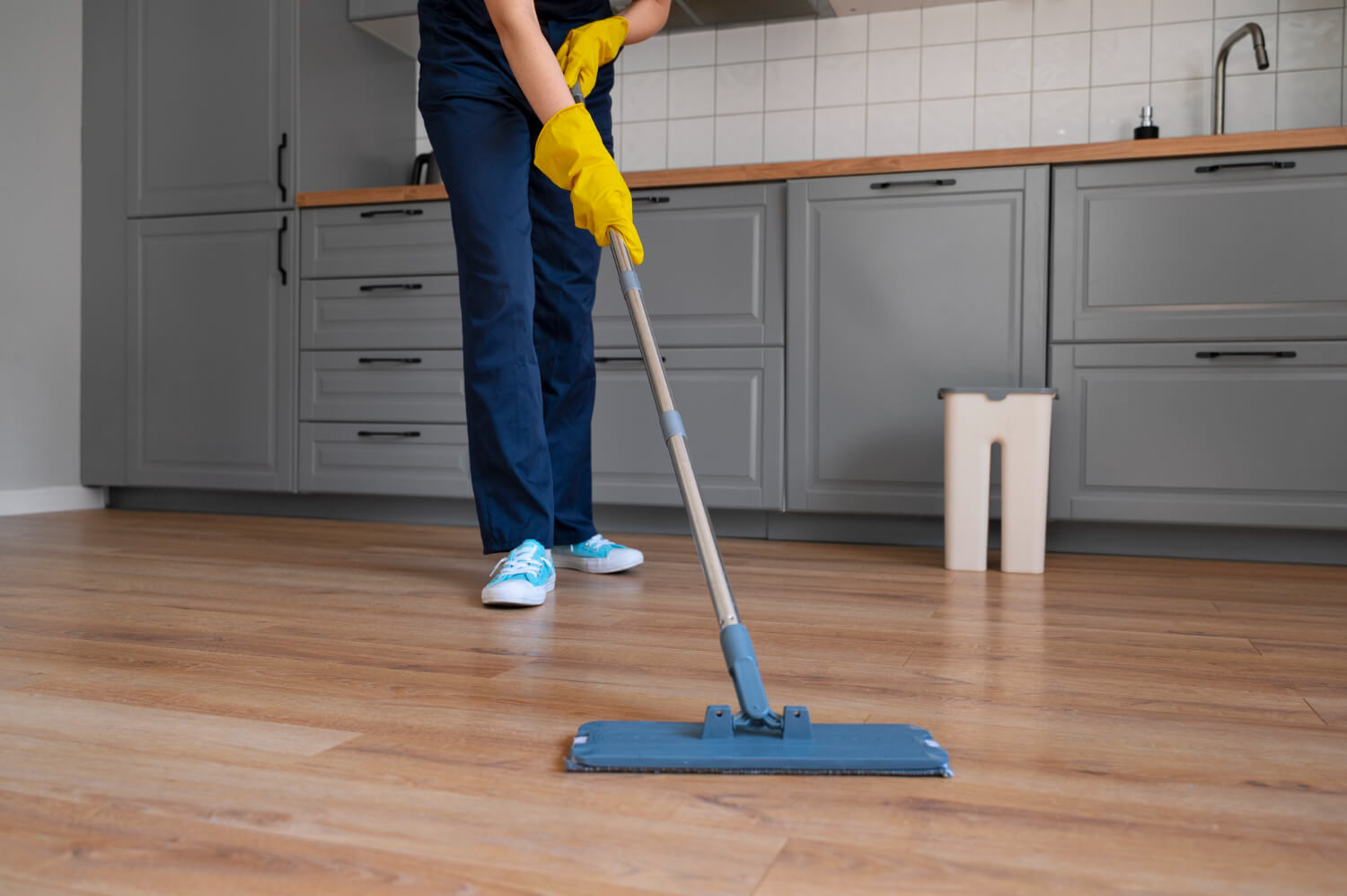Tackling stubborn grout stains can be a challenging but surmountable task for homeowners and cleaning enthusiasts alike. This comprehensive guide will walk you through the process step-by-step, combining insights from various reliable sources.
Why Does Grout Get So Dirty?
Grout’s porous and rough nature makes it a magnet for dirt and grime, often becoming dirtier than the tiles themselves. Improper cleaning methods, like using dirty mop water, exacerbate the problem, pushing dirt from tiles into the grout.
Identifying Your Tile Type
The first step in cleaning grout is to identify the type of tile you have. This is crucial because some cleaning agents can damage certain types of tiles. For example, avoid using bleach or vinegar on stone tiles, as they can ruin the finish. In contrast, ceramic or porcelain tiles are more resilient and can be cleaned using a variety of solutions, including vinegar, baking soda, and bleach.
Understanding the Cause of Stains
The cause of grout stains can vary based on the location of the tiles. Bathroom grout may have mold and mildew stains due to prolonged moisture exposure, kitchen grout could have food or grease stains, and living room grout may show signs of dust or wear and tear.
Choosing the Right Cleaning Agents and Tools
Depending on the severity and type of grout stain, you may need a range of cleaning agents from mild to strong, such as:
- Mild detergent or dish soap
- Baking soda
- White vinegar
- Hydrogen peroxide
- Rubbing alcohol
- Chlorine bleach
- Commercial grout cleaners
In terms of tools, you’ll need:
- Nylon brush or stiff-bristled brush
- Old toothbrush
- Spray bottle
- Scouring pad
- Microfiber cloth
- Mop
- Steam mop
Remember, never use a metal brush as it can damage grout lines. It’s also important to wear personal protective equipment like goggles, gloves, and a mask, especially when using chemicals.
Step-by-Step Cleaning Process
✓Preparation: Clean the tile surface with hot water to remove visible dust and dirt.
✓Mixing Solution: Prepare your cleaning solution, be it a homemade mixture or a commercial cleaner.
✓Application: Apply the cleaner to the grout and let it sit for a few minutes.
✓Scrubbing: Use a brush to scrub the grout in a circular motion, then rinse with clean water.
✓Drying: Allow the grout to dry completely, ideally for 24 hours.
✓Sealing: Apply a grout sealer to prolong cleanliness and prevent quick re-soiling.
Maintenance and Prevention
Regular cleaning routines are essential for keeping grout clean. Simple practices like weekly vinegar sprays and keeping the grout dry can significantly prevent dirt accumulation and mold growth. Sealing the grout after cleaning is also recommended.
For Stubborn Stains
For extremely stubborn stains, consider using a steam mop or a combination of hydrogen peroxide and baking soda. Apply the mixture, let it sit, then brush off gently and mop over with a regular damp mop. Finally, go over with a steam mop for deep cleaning.
While focusing on grout cleaning, it’s equally important to consider the broader context of tile cleaning, especially for households dealing with allergies. Regular and thorough cleaning of tiles plays a critical role in minimising allergens, contributing significantly to a healthier living environment. This aspect is elaborately discussed in our dedicated article on ‘Tile Cleaning for Allergies‘.
In conclusion, tackling stubborn grout stains requires a combination of the right techniques, tools, and maintenance practices. By following this guide, you can restore the pristine appearance of your grout and extend its cleanliness. Remember, consistency in cleaning and maintenance is key to keeping those grout lines sparkling clean.
Can I use vinegar to clean all types of tile grout?
Vinegar is a versatile cleaning agent for grout, but it’s not suitable for all tile types. Avoid using vinegar on natural stone tiles like limestone, granite, or marble, as it can damage their finish. For these types of tiles, opt for a mild detergent or pH-neutral cleaners.
How often should I seal my grout?
It’s recommended to apply a grout sealer after cleaning, and then reapply it at least twice a year. Sealing helps protect the grout from dirt and moisture, prolonging its cleanliness and appearance.
Is it necessary to use a special brush for cleaning grout?
Yes, using a brush specifically designed for grout cleaning, typically with stiff bristles and made of nylon, can make the process more effective and less time-consuming. Avoid metal brushes as they can damage the grout.
Can I clean grout without scrubbing?
Yes, for lighter stains or maintenance cleaning, you can use a steam mop or a mixture of hydrogen peroxide and baking soda. Apply the mixture, let it sit, then lightly brush off or use a damp cloth, followed by a steam mop for deeper cleaning.






